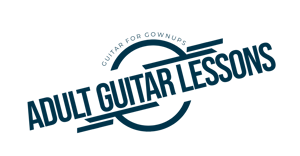How to Read Music Charts
Throughout the course of taking guitar lessons you will encounter a number of music “charts”. A music chart is simply a way of notating a song or musical piece.
Music charts can include a music staff with various notations, a chord diagram (see “Reading Chord Diagrams”), and TAB (see “How to Read TAB”).
It is important to note that reading a music chart does not require the ability to be able to “read” music. Just an understanding of basic music notation will be all you need to make full use of music charts.
The core of a music chart is the “staff”. The staff consists of five horizontal lines separated by small vertical lines into measures. Each measure contains music notation information and the length of the measures is determined by the time signature of the song or piece. Much of popular music is written in a time signature known as 4/4 (four/four). This just means that there are 4 beats per measure, and every quarter note equals one beat.
Look at the staff below. This is an example of a basic 5 line staff. As you can see, it is separated into six measures.

Look at the next chart below. In this example there are “forward slash” lines in the measures.These forward slash lines each indicate a beat within that measure. In this case there are four beats per measure.

In the next example below, the guitar strumming pattern has been added to the staff with the beats. The symbols that resemble an upside down “U”, or a “staple”, indicate a “down” stoke on the guitar. Conversely, the symbols that resemble a “V” indicate an “up stroke” on the guitar.

On the next chart below, chord diagrams have been added. (see “Reading Chord Diagrams”) In some cases the chords will be shown by “letter” name only, without the actual diagram.

On the final example below, a TAB line has been added below the staff. (see “How to Read TAB”)

As you can see, a music chart is much less intimidating when all the separate parts are broken down and analyzed.
Keep in mind that you may see charts with all of these elements included, but you will also see charts that use various combinations of these elements. It really just depends on the musical piece itself and the author or composer. Some charts can be very complicated, and others very basic.
Study up on these various elements of a music chart and you will be better prepared when you begin guitar lessons.
Please do not hesitate to contact us with any questions!



